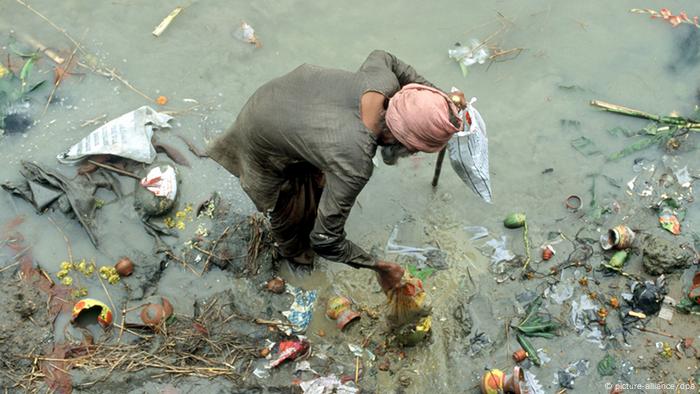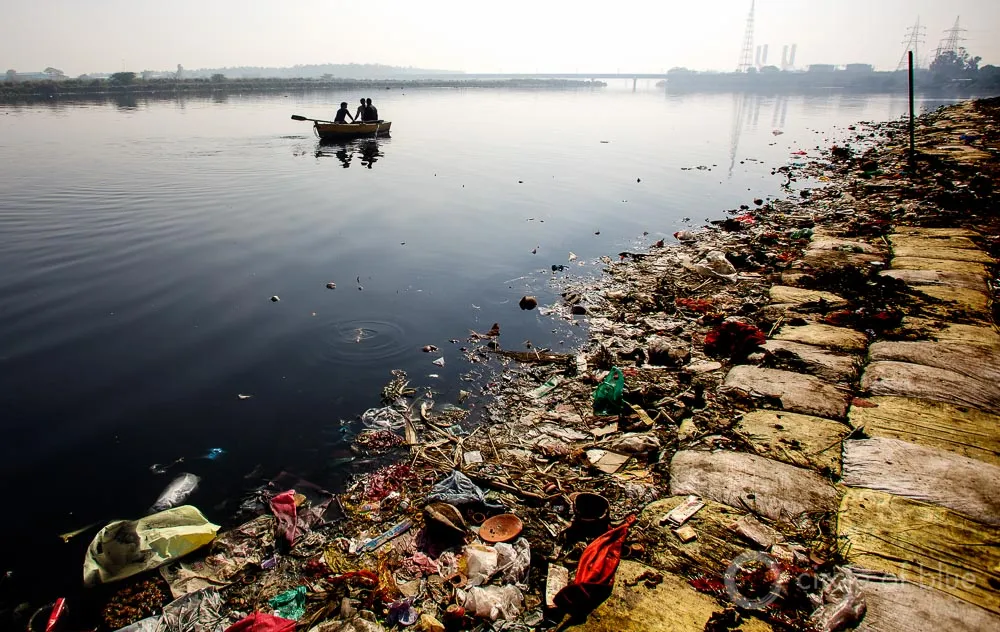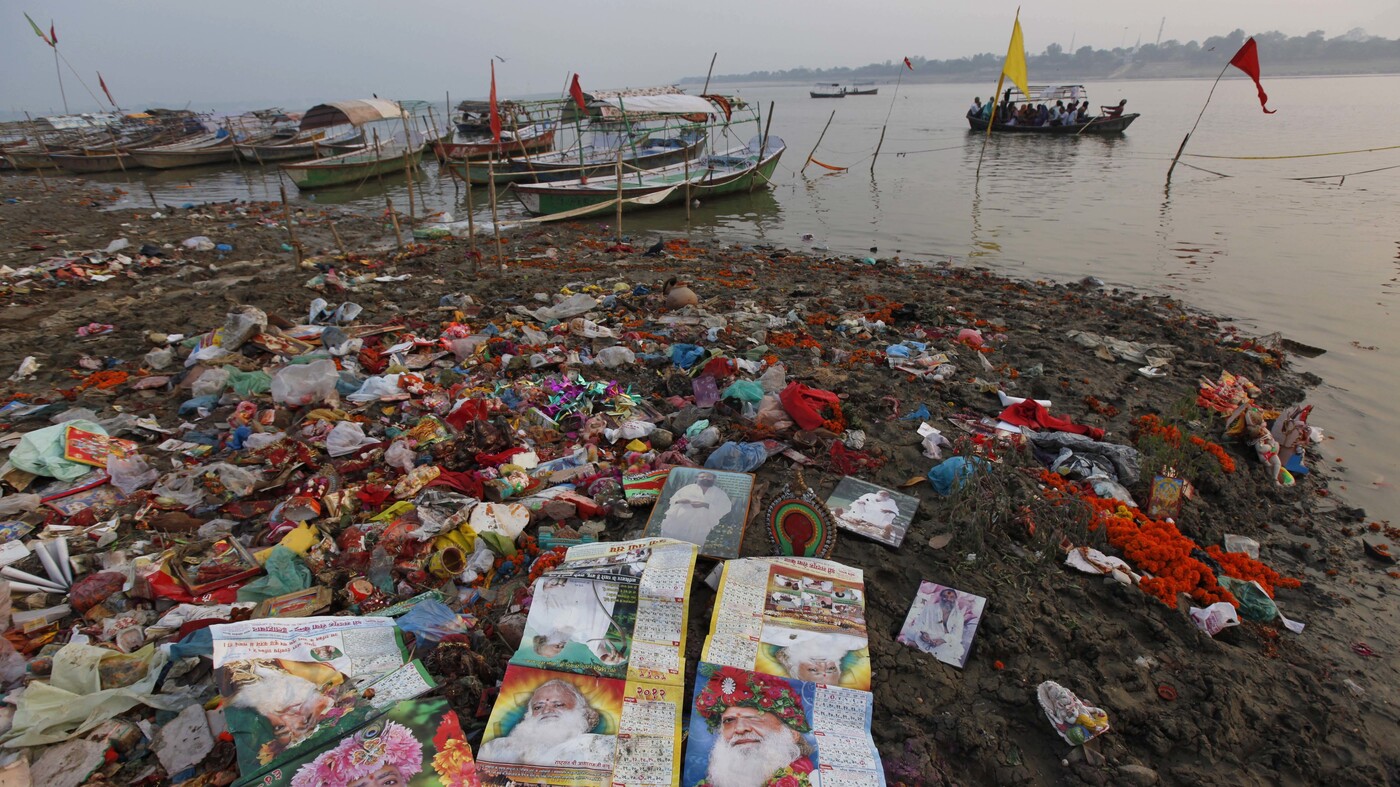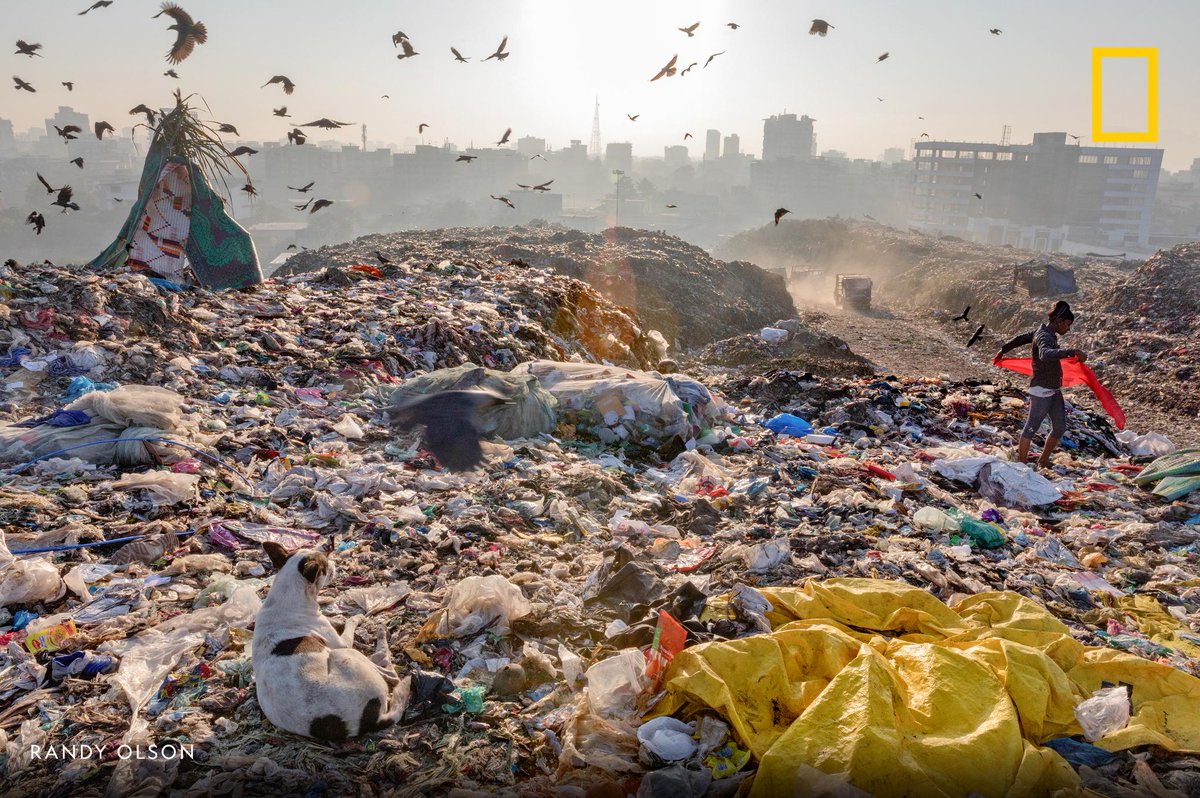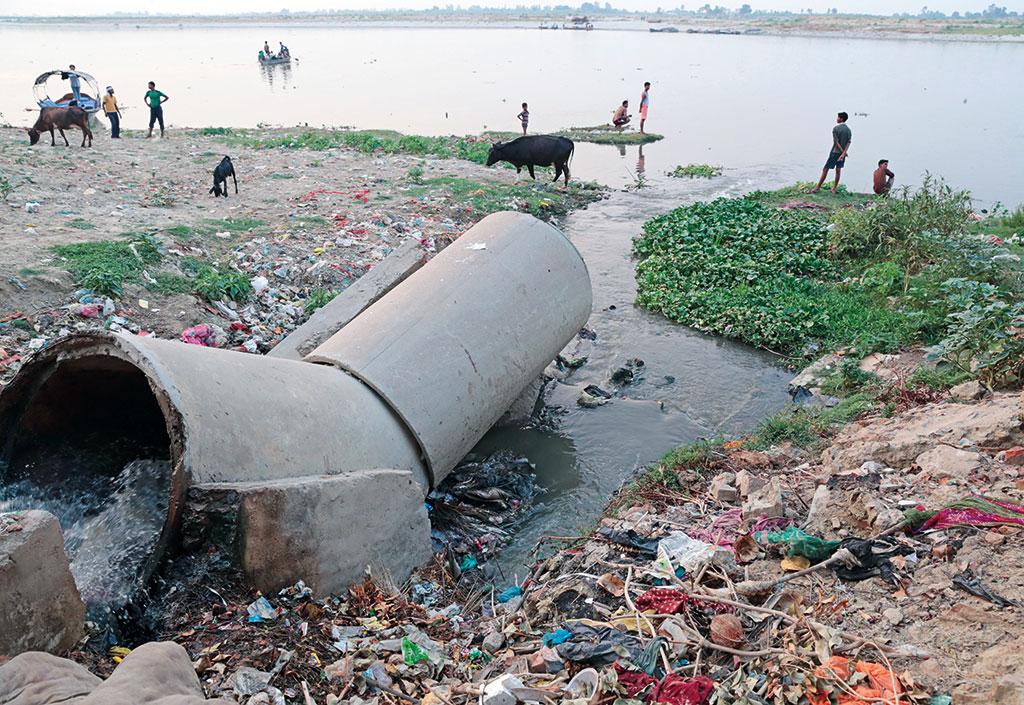Problems
Pollution Ganges in India
The sacred Ganges is rightly considered one of India's symbols. One of the world's longest and most full-flowing rivers gives life to about 500 million people today. Newborn babies are sprinkled with the water of the Ganges, pilgrims come to its shores, and the waters of the Ganges are often a place of burial. Despite its sacred love, people have turned the Ganges into a dumping ground for garbage, decaying corpses, feces, and chemicals. Today the Ganges is considered one of the dirtiest rivers in the world. Man is to blame. But its religious significance is such that some are willing to make great sacrifices to see it purified. And yet the river has been polluted by the very people who venerate it. People actively pollute the river with little concern for what the future holds.
The main factor of pollution
The main pollution factor has been the activities of large industrial enterprises, discharging wastewater directly into the river, and they are catastrophically worsening the condition of the water. About three million liters of wastewater flow into the Ganges every day, and only half of it has undergone any treatment. The river's waters are so dirty that it is considered one of the most polluted waterways in the world. But it's not just sewage that goes into this river; waste from tanneries, chemical plants, textile factories, slaughterhouses, and even hospitals is dumped into it untreated. Dams block and alter the flow of the river upstream. Agriculture drains huge amounts of water and uses it to irrigate tens of thousands of fields.
How climate change and pollution of the Ganges are related
Even climate change can lead to pollution of the Ganges. Monsoon rains are becoming less predictable and shorter in duration, droughts are increasing, and the Himalayan glaciers that feed the highest points are rapidly shrinking. As a result, the level of the river is rapidly falling.
The destructive activity of human beings
Even love kills the river. Since the Ganges is a holy place, people come by the millions to bathe here, thereby purifying themselves from sin. In addition to bathing, people bring food and flowers, often thrown into the water in small cardboard boxes or on pieces of plastic. Every day tens of thousands of flowers are carefully placed in the river and left to float downstream. This may seem benign enough, but many of these flowers have been treated with chemicals to keep them bright and fresh longer. When these flowers hit the water, the chemicals wash off. Hindus also consider the banks of the Ganges one of the most favorable places for death and cremation. After cremation, the remains are placed in the river and left to float downstream. Some bodies, such as those of small children, are never even cremated, but simply wrapped in a white cloth and sent on their way. In Varanasi, the holiest city on the banks of the Ganges, about 40,000 bodies are cremated each year. Scientists have discovered "super bacteria" living in waters resistant to most forms of commonly used antibiotics. So far, the eerie sight of the filthy river stands in stark contrast to the idea that the Ganges is the epitome of holiness and purity, and that its waters can wash away people's sins. The great river must be saved and decisions must be made urgently.
Gallery
6Timelines
2023
October
Noting the key issues relating to the pollution of the Ganga and its tributaries in West Bengal, Uttarakhand and Uttar Pradesh, the National Green Tribunal has issued notices to District Ganga Protection Committees in the three states and sought a report from the district magistrates concerned. The tribunal was hearing the matter regarding the prevention and control of pollution of the Ganga in the three states. The green panel identified the discharge of untreated sewage, industrial effluents, hazardous waste and biomedical waste into the river, besides encroachment of the floodplains and sand mining as the key reasons for the Ganga's pollution in West Bengal. The matter has been listed for further proceedings regarding Uttarakhand, Uttar Pradesh and West Bengal, respectively.
April
The National Green Tribunal (NGT) pulled up the Uttar Pradesh administration for failing to prevent damage to River Ganga and “wasting public money”. The bench of justices Adarsh Kumar Goel and Sudhir Agarwal of the National Green Tribunal (NGT) expressed dissatisfaction with the failure of the state administration to hold erring officers accountable. The court noted that 337,000 tonnes of legacy waste is yet to be remediated in Ballia. No accountability has been fixed for the erring officers resulting from a discharge of pollution directly in Ganga. There is a daily discharge of about 20 MLD of untreated sewage in Ganga and there is no information about the performance of in-situ remediation claimed at six locations in Ballia, the court noted. Grievance in the application was against the discharge of sewage and solid waste into the Katahal drain connected to the river Ganga in Ballia, Uttar Pradesh. When the matter was taken up by the NGT the court took into consideration the report filed by the joint committee comprising the National Mission for Clean Ganga, the Central Pollution Control Board, Secretary, Urban Development Department, UP, Uttar Pradesh Pollution Control Board and District Magistrate, Balia. The court observed that “57 KM sewerage and 5.68 KM rising mains have remained unutilized for 13 years. There is no terminal STP and sewerage is lying defunct”.
January
71 percent of the river’s monitoring stations reported alarming levels of fecal coliform. The actual share is most likely higher, as the Central Pollution Control Board (CPCB) tested samples from only 59 of the 97 stations or just 61 percent of the river. Fecal coliforms are a group of bacteria found in the gut and feces of warm-blooded animals. Their presence indicates that the water has been contaminated with the fecal material of humans or other animals, which enters rivers through the discharge of untreated sewage. While Uttarakhand had permissible levels of fecal coliform at all 12 tested stations, numbers in three other states — Uttar Pradesh, Bihar and West Bengal — are alarming. No samples were collected from Jharkhand. Bihar and West Bengal had unhealthy levels of fecal coliform at all 37 monitoring stations. In Uttar Pradesh, five of the 10 monitored stations had high levels of pollution, showing data accessed by Down To Earth (DTE) under the Right to Information (RTI) Act. Of the 42 polluted stations, 34 had fecal coliform over 11,000 most probable number (MPN) per 100 ml, which is four times the permissible limit (less than 2,500 MPN per 100 ml). Seven stations, all in Bihar, had 92,000 MPN per 100 ml, nearly 37 times the permissible limit. State pollution control boards collect manual samples twice a month at most stations. For the analysis, DTE has considered the monthly sample with higher contamination.
2022
July 25
The research, conducted by scientists at the Indian Institute of Science Education and Research in Kolkata shows that the lower reaches of the river are the most polluted, with more pronounced signs of algal blooms and signs of eutrophication compared to the middle or upper reaches. This was the first study to quantify the true extent of pollution by water quality index and algal blooms in the lower reaches of the river. The study was funded by the Government's Department of Science and Technology's Water Technology Initiative. His conclusions have been submitted to the government. Scientists involved in the study believe that this will hurt biodiversity in the region, including the Sundarbans World Heritage Site, as well as damage the ecological health of the Ganges River Basin. It can also cause illness for pilgrims who bathe in the river at places like Dakshineswar. Poor water quality in the river can have "long-term adverse ecological consequences for the river's aquatic ecosystem, including higher trophic levels such as resident fish populations," the study said.
2021
July 22
Among the three cities, the Toxic Link study found that locations in Varanasi showed the highest microplastic content in Ganga water. This may be the result of cumulative pollution downstream, as well as industrial and human activities. Pollution of all kinds increased as one traveled downstream from Haridwar to Varanasi. This was noted not only in the Toxics Link report but also in many others. This indicates that municipal and industrial discharges are responsible for microplastic pollution in river water. The pollution is more prominent in Kanpur and Varanasi, which may be due to emissions from tanneries and other industries like textile etc, the study revealed. The study not only measured the number of microplastics but also analyzed the types of microplastics present in the Ganges.
2020
February 11
Experts link pollution of the Ganges and other rivers to India's high rate of water-borne diseases, which kill an estimated 1.5 million children each year. The researchers also found the presence of so-called superbugs in the Ganges water samples, bacteria resistant to the most common antibiotics.
2019
January 16
The study shows that as the number of people living in nearby cities increases, the problem of water quality in the Ganges is exacerbated. Urban populations in the Ganges watershed contribute about 100 times more microbial pollution per capita to the river than their rural counterparts. This means that untreated wastewater discharged from sewers turns out to be worse for water quality in the river than wastewater discharged where there is none at all. It is clear, therefore, that water quality in the Ganges is a more complex and widespread problem than previously thought. Cities with more advanced wastewater management were expected to be better for the river. But the opposite turned out to be true: more sewage pipes without wastewater treatment worsened the pollution of the river.
2016
October 10
The National Mission for Clean Ganga (NMCG) is an executive arm of the National Ganga Council under the Ganga River Authority (Rejuvenation, Protection, and Management) Order. The order dissolved the National Ganges Basin Authority. The goal is to comprehensively clean the Ganges and its tributaries.
2014
September 01
The Union Cabinet has given its go-ahead to set up a Clean Ganga Fund to use the collection for various activities under the Namami Gange program to clean the Ganges.
July 10
Union Finance Minister Arun Jaitley announced a comprehensive Ganga development project named Namami Gange (meaning "Obeisance to the Ganges River") and allocated Rs 2,037 crore for the purpose. The objectives were to effectively reduce pollution, and conserve and rejuvenate the Ganges. The project covers 8 states. As part of the program, the Indian government has ordered the closure of 48 industrial facilities around the Ganges. The budget of the program is Rs. 20,000 crores for the next five years. This is a significant five-fold increase in expenditure over the last 30 years (the Indian government has incurred a total expenditure of approximately 4000 crore rupees on this task since 1985). The center will now undertake 100% funding of various activities/projects under this program.
2012
A study conducted by the National Cancer Registry Program (NCRP) under the Indian Council of Medical Research, suggested that those living along its banks in Uttar Pradesh, Bihar, and Bengal are more prone to cancer than anywhere else in the country.
2010
It has been announced that the Indian government has launched a $4 billion campaign to keep untreated urban and industrial sewage out of the river by 2020. During this campaign, the Sankat Mochan Foundation Lobby Group began working with GO2 Water Inc., a Berkeley, California-based wastewater treatment company, to develop a new wastewater treatment system in Varanasi. At the same time, the Supreme Court of India was seeking the closure and relocation of many industries, such as Tulsi, along the Ganges.
2006
A measure of pollution in the Ganges showed that monitoring of river water over the previous 12 years had shown fecal coliform counts of up to 100,000,000 MPN (most probable number) per 100 mL and biological oxygen demand levels averaging over 40 mg/L in the most polluted part river in Varanasi. The overall incidence of waterborne/enteric diseases, including acute gastrointestinal diseases, is estimated to be approximately 66%. A systematic classification of river waters by the Uttarakhand Environment Protection and Pollution Control Board (UEPPCB) placed the Ganges in category D (excessively polluted rivers). Coliform bacteria levels in the Ganges also tested at 5,500, a level too high to be safe for agricultural use, let alone drinking and bathing.
1914
November 05
After a long struggle, British India agreed that the uninterrupted flow of the Ganges was a rudimentary Hindu right. In Indian history, this day is known as "Aviral Ganga Samjhauta Divas" (Day of Uninterrupted Agreement on the Flow of Ganga). The sanctity of the agreement is not preserved by the state and central governments of India after independence, although it is legally valid. More and more river water is diverted for irrigation, turning the river into a polluted sewer.
1854
Built during the British colonization of India, the Haridwar Dam caused the Ganges to decline, greatly reducing the flow of the river. The Farakka Dam was originally built to divert fresh water into the Hooghly River but has since caused salinity in the lower reaches of the Ganges, damaging groundwater and soil along the river.
